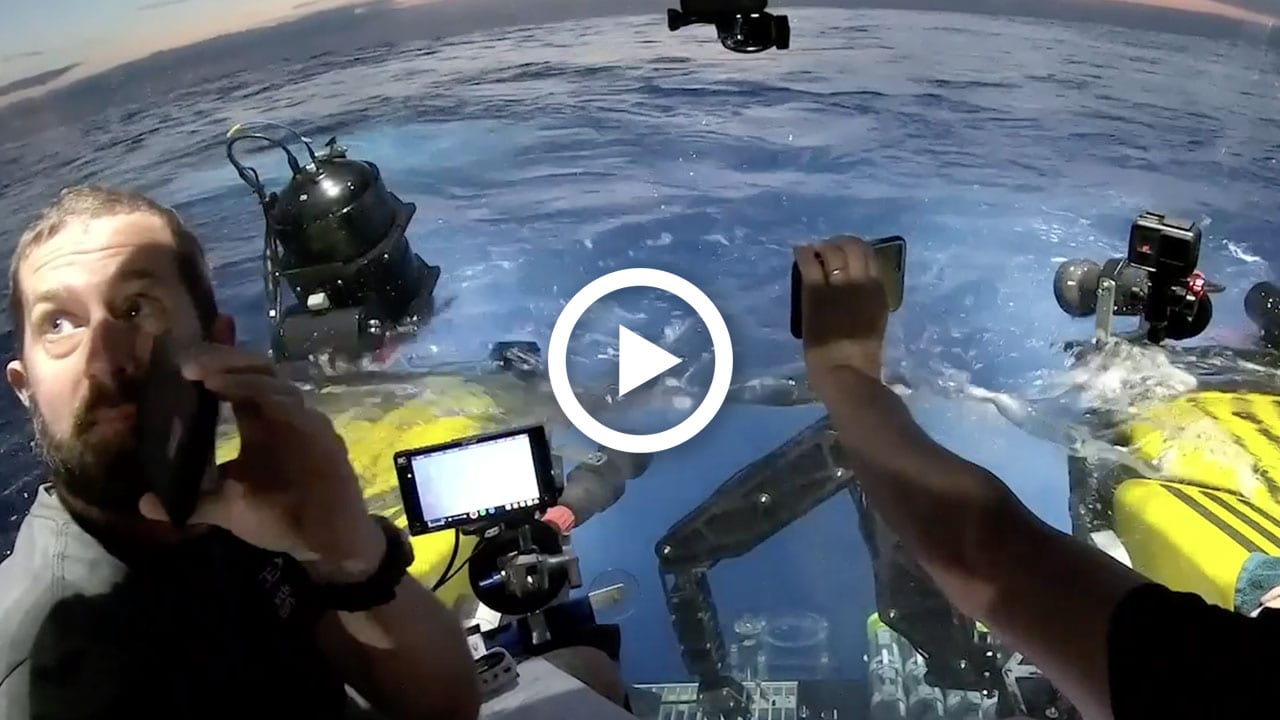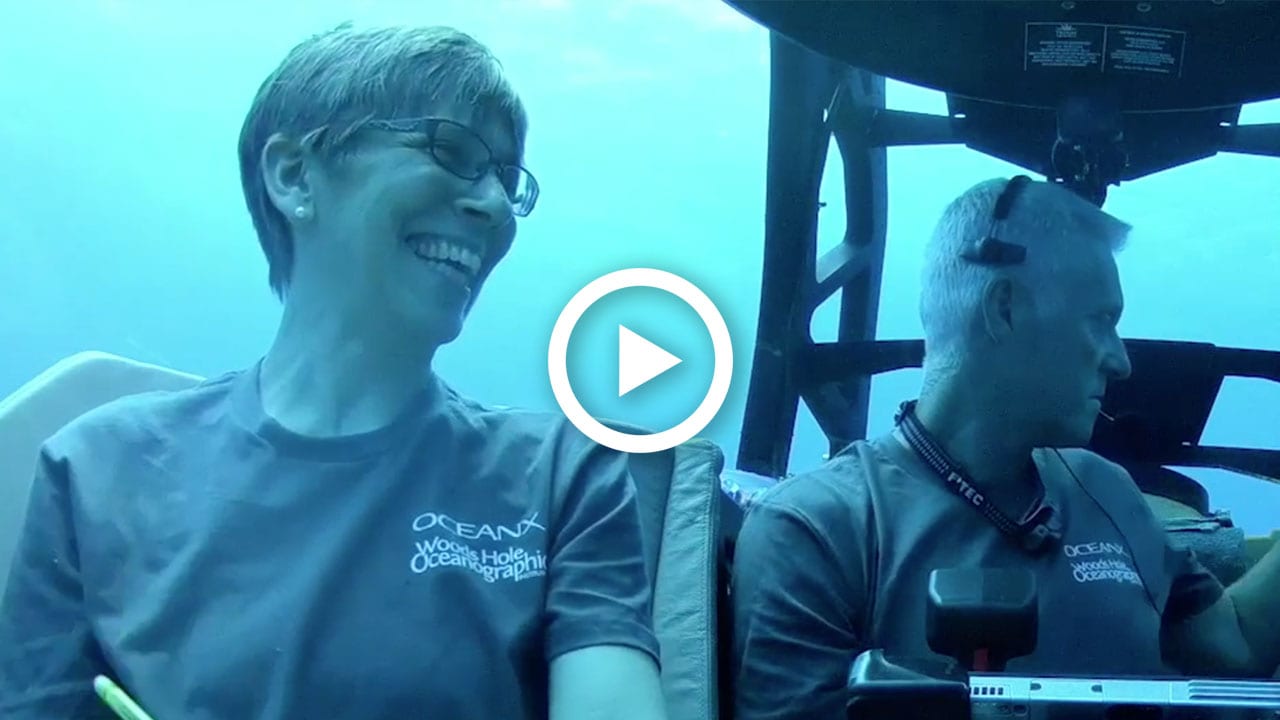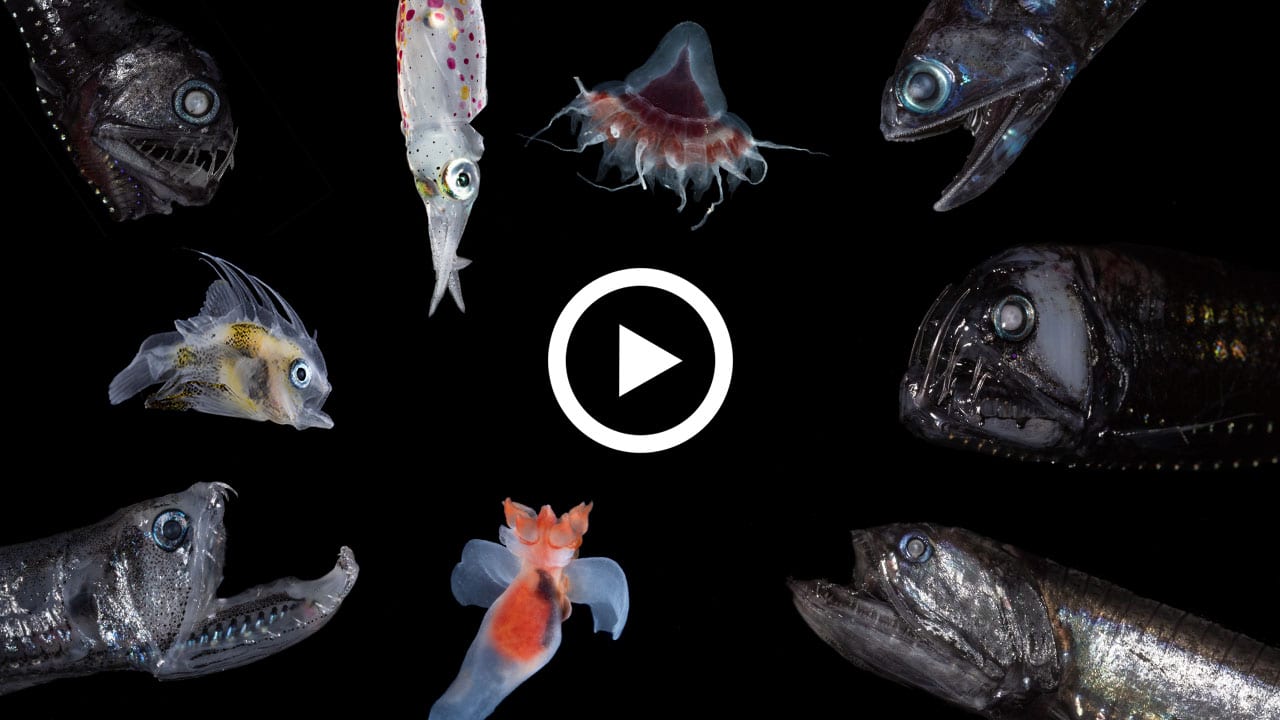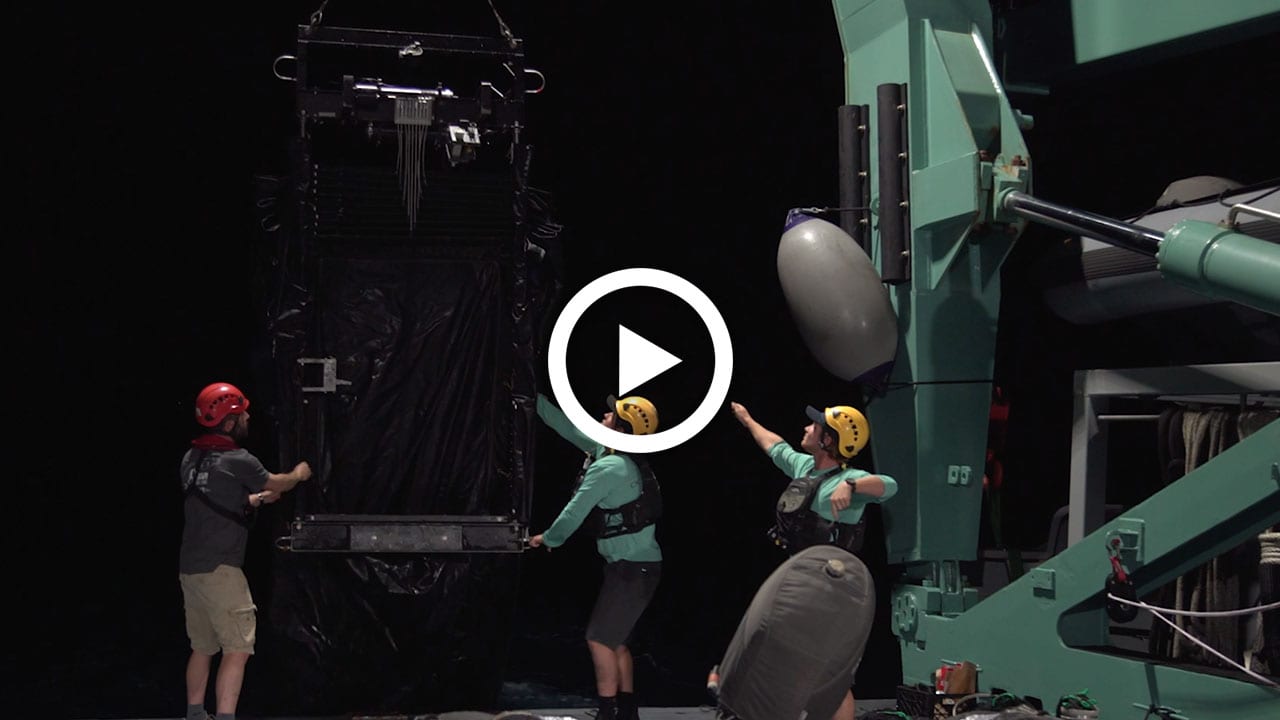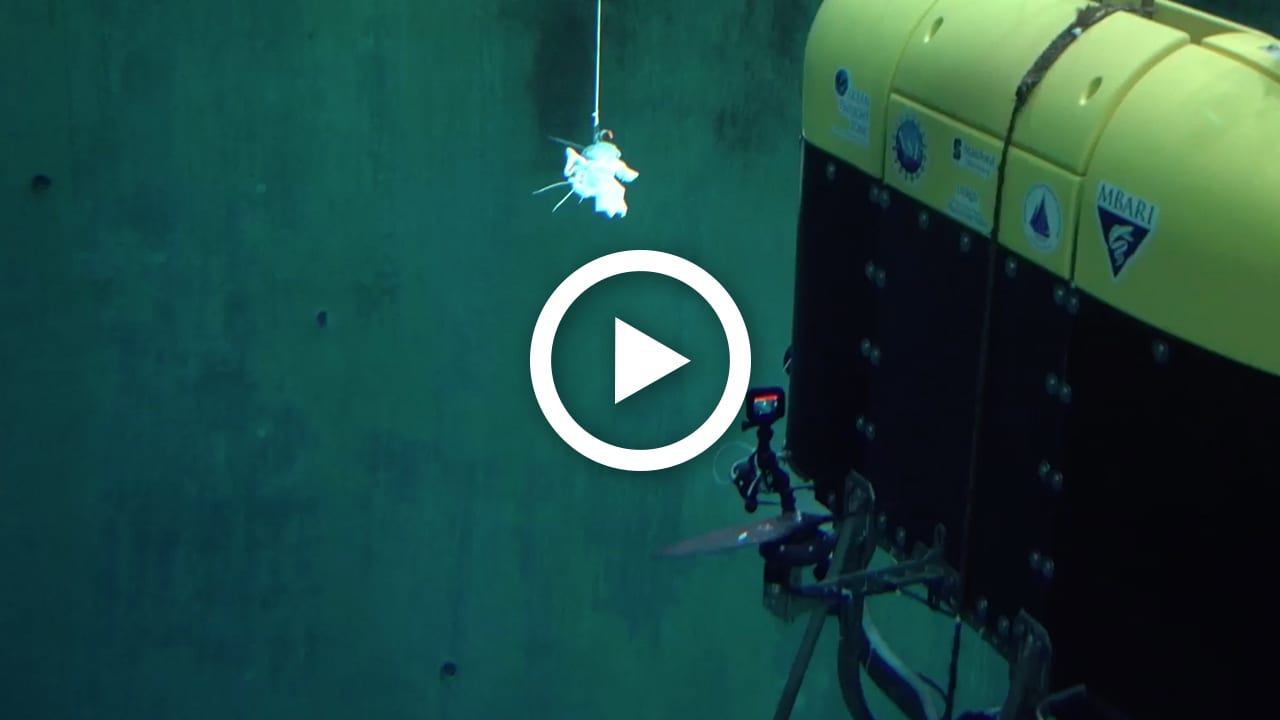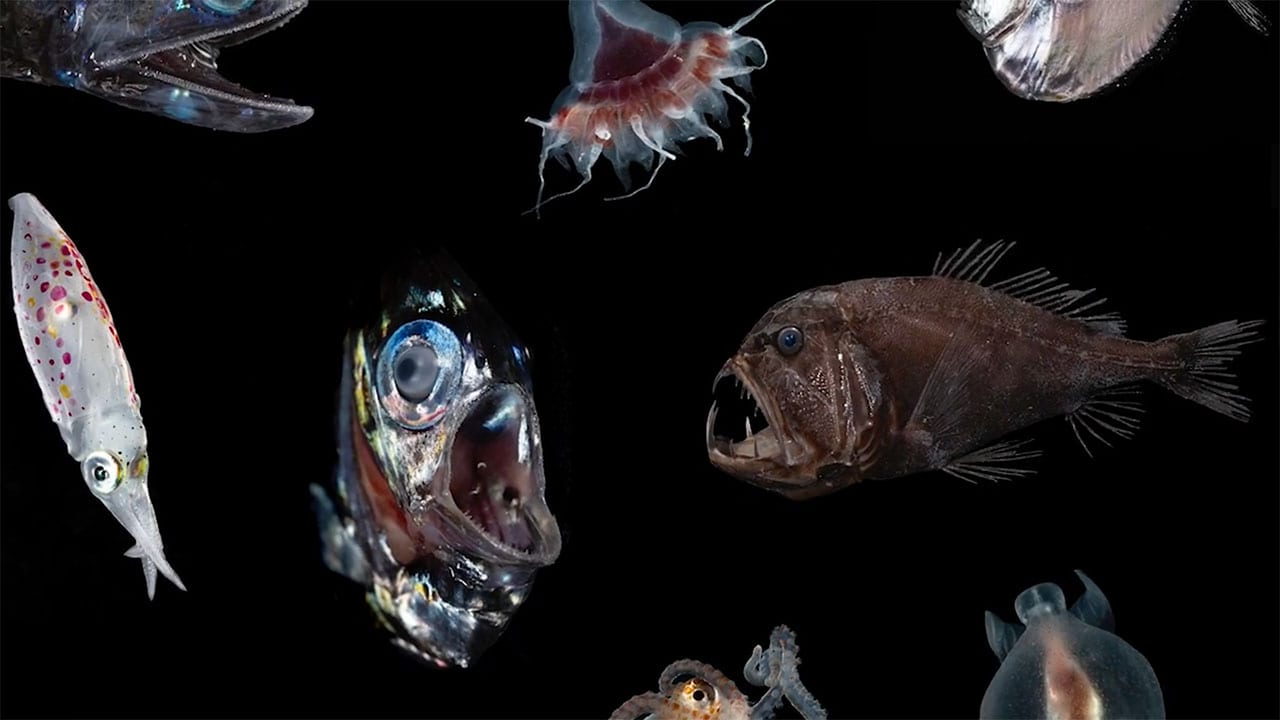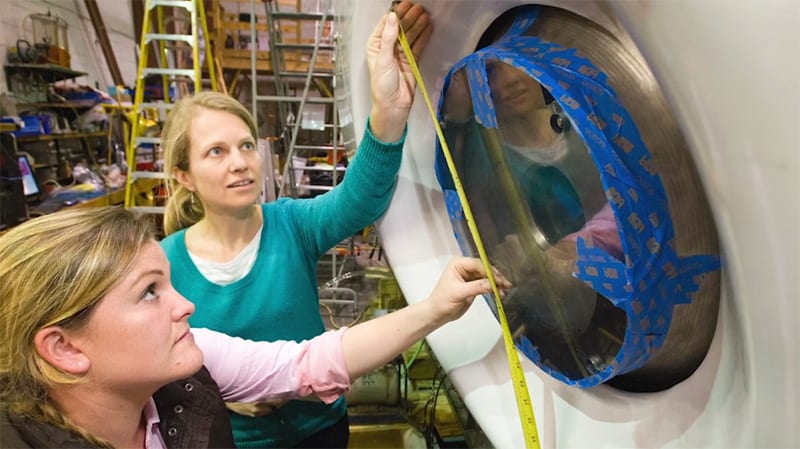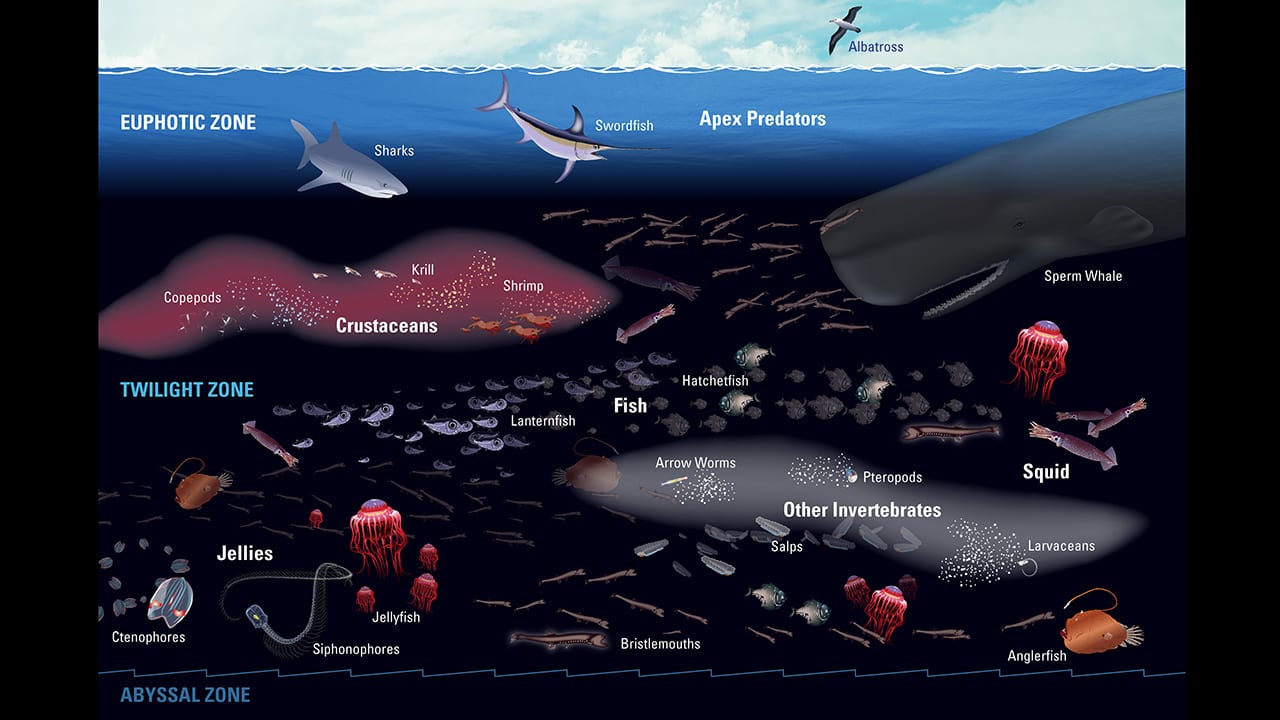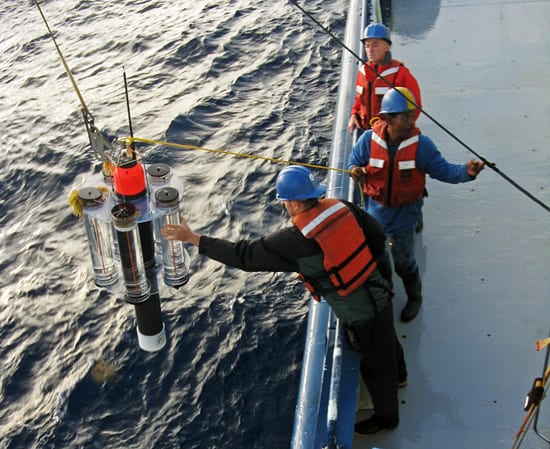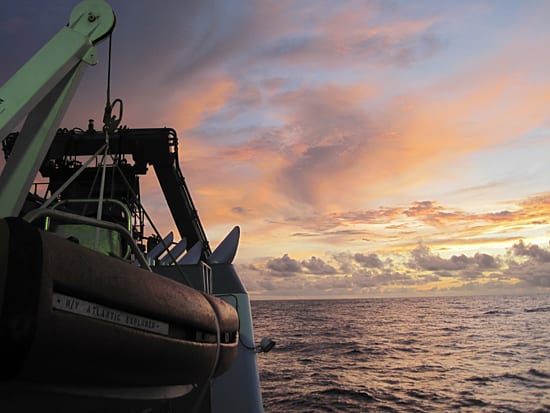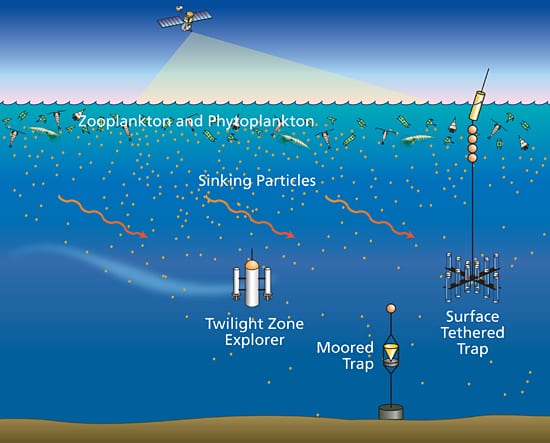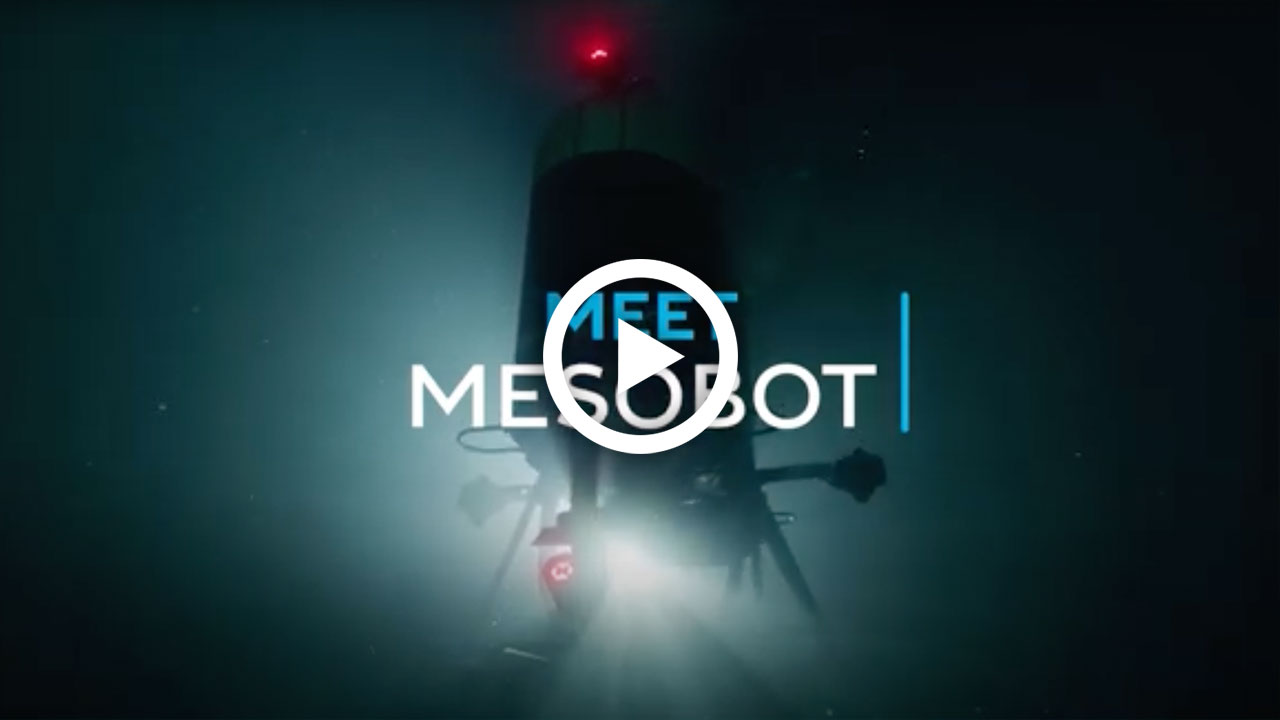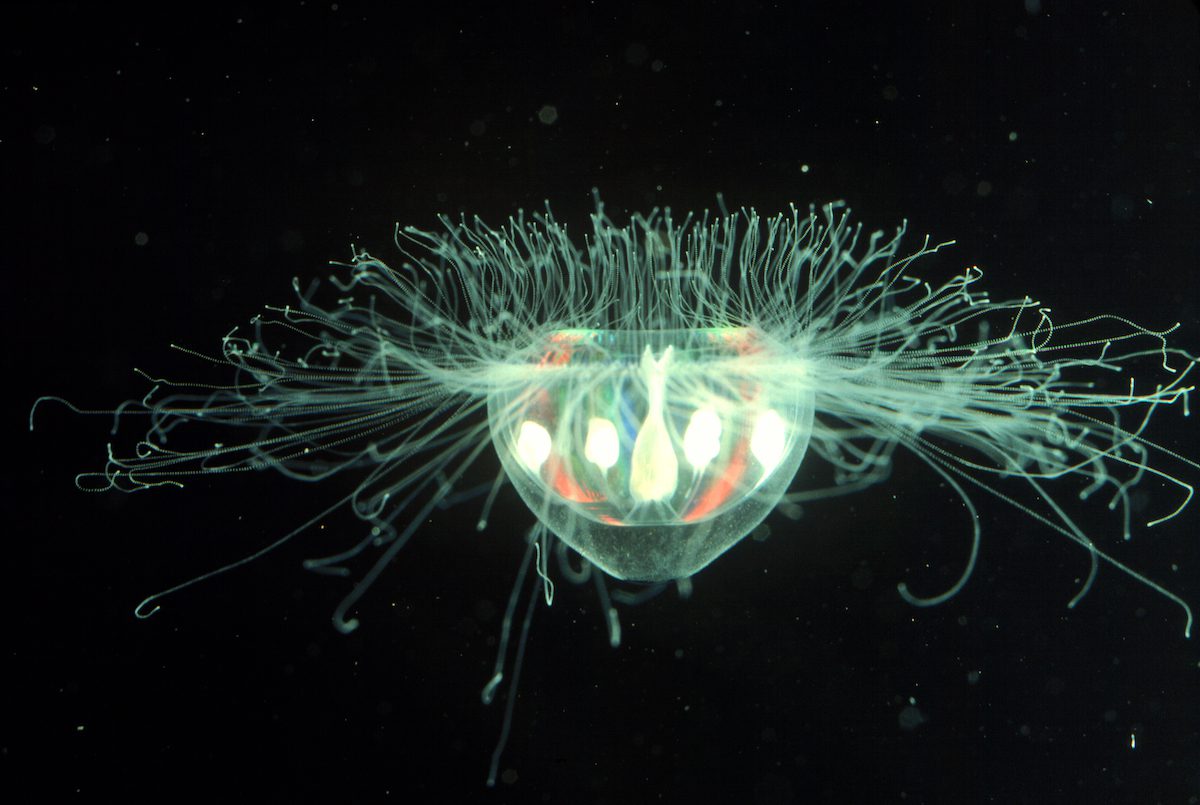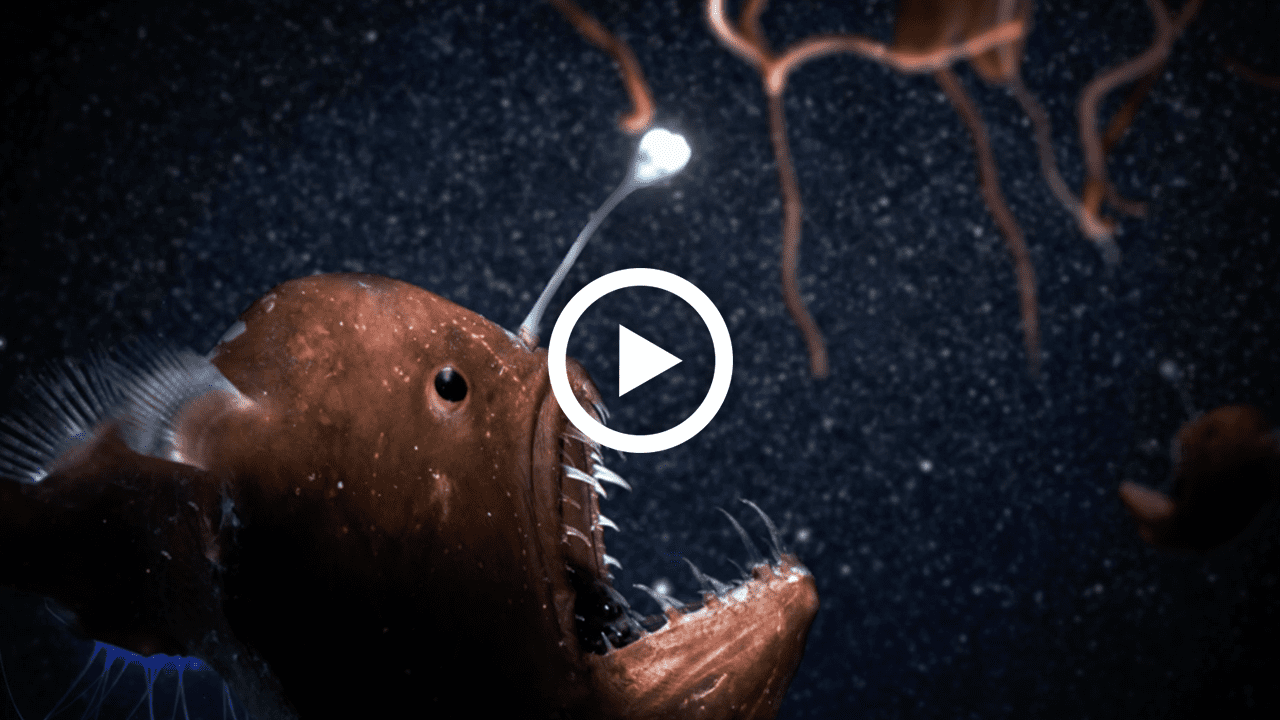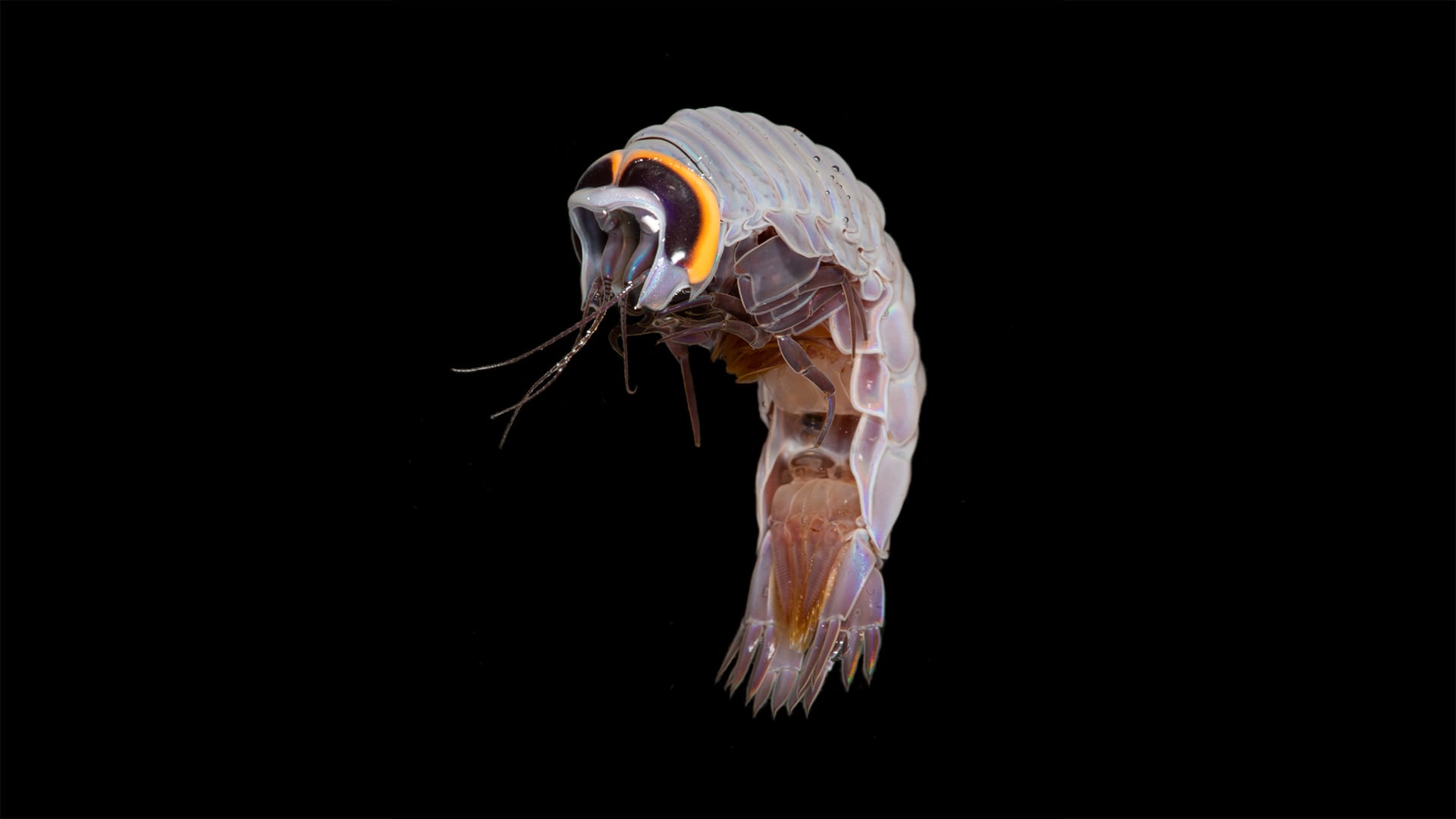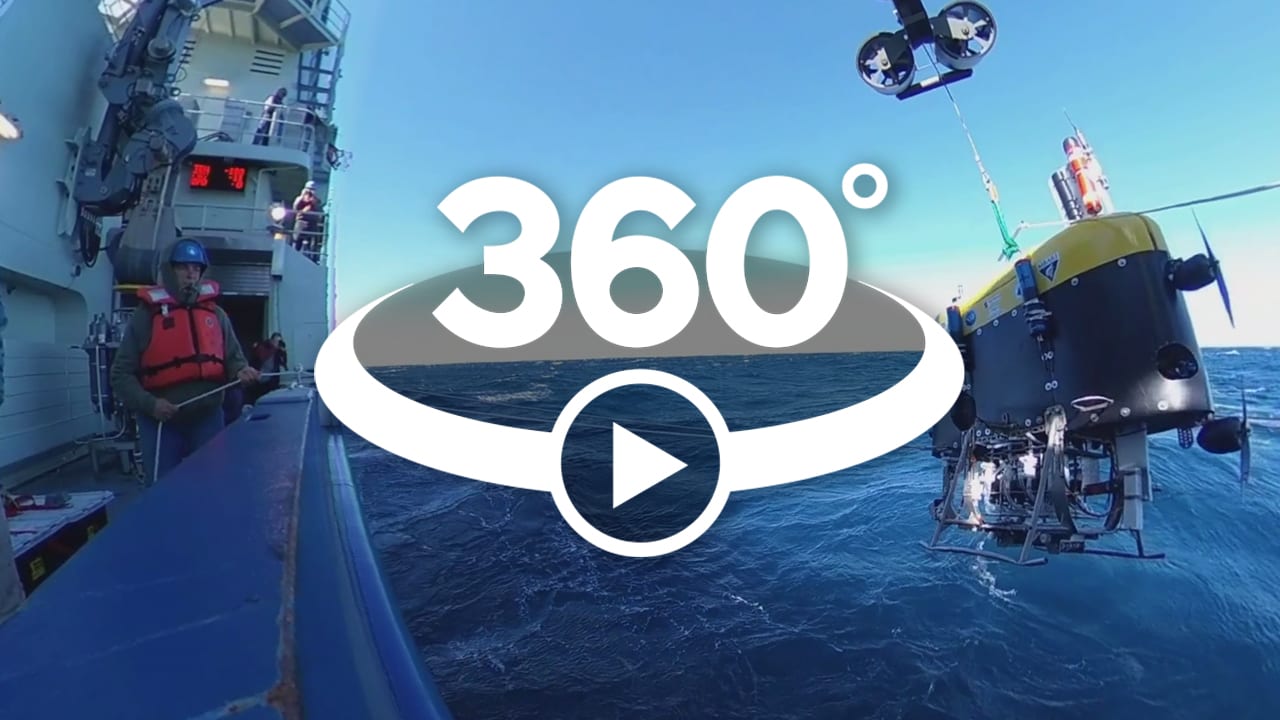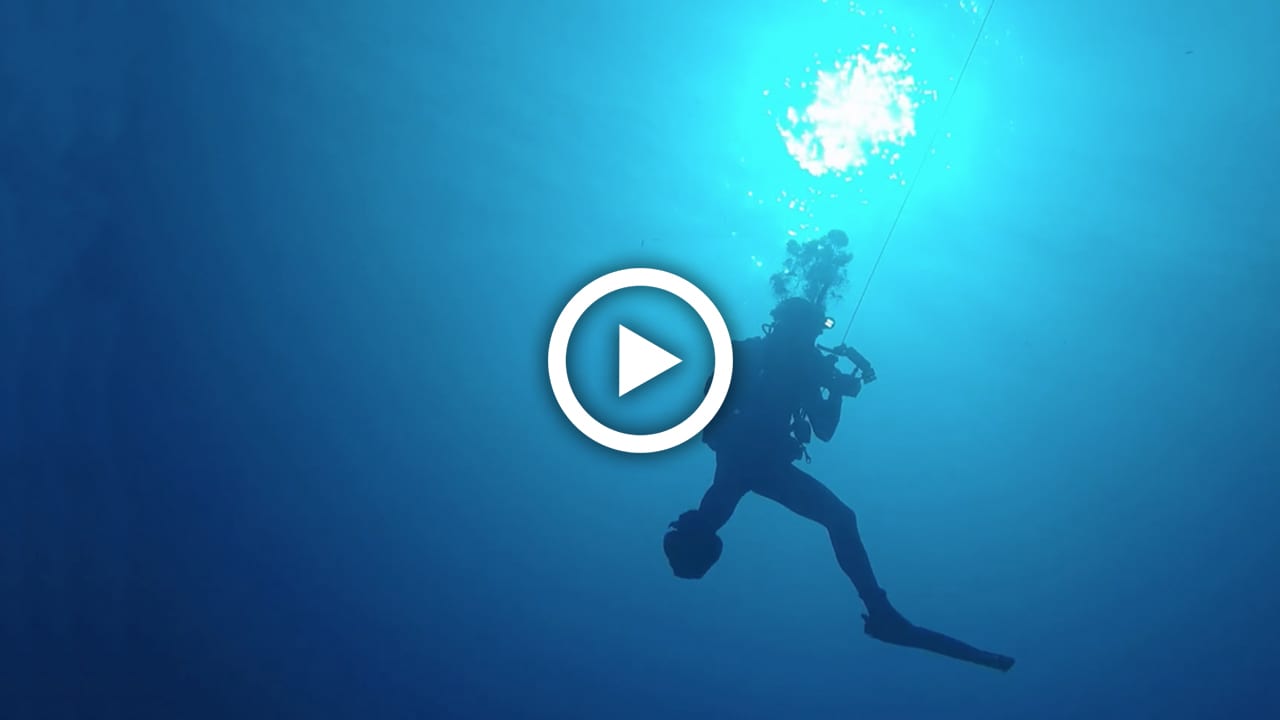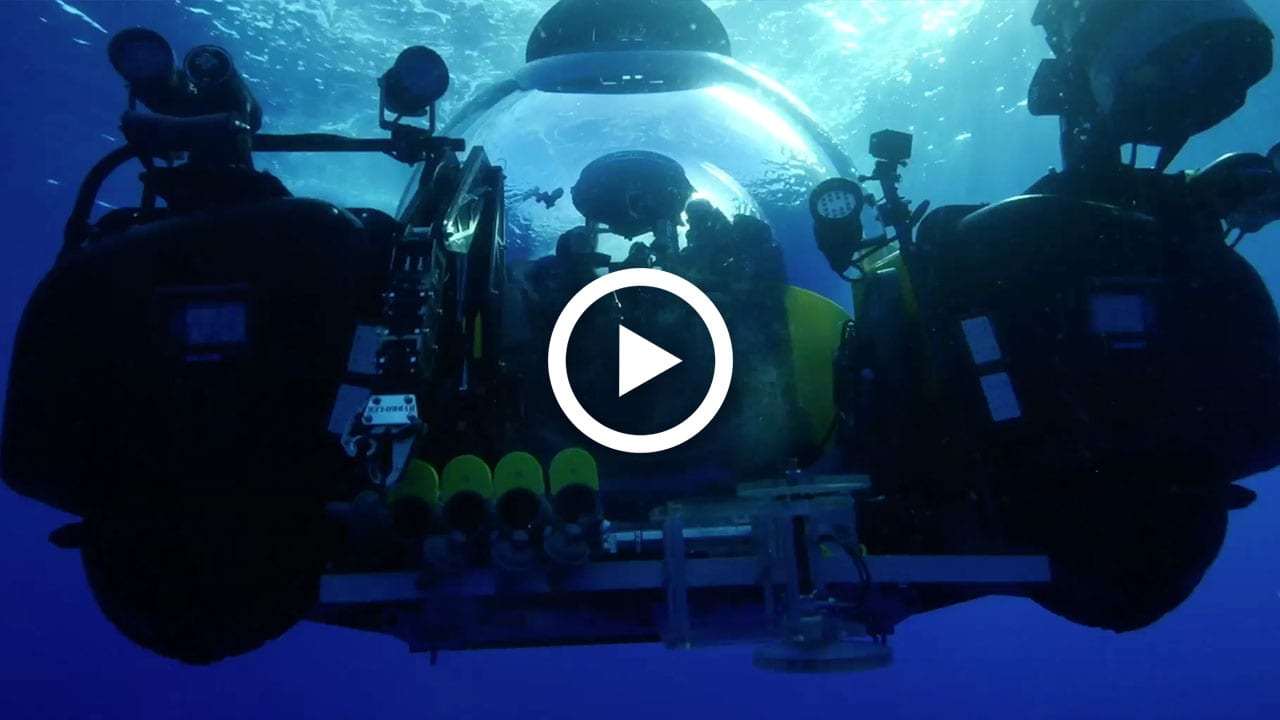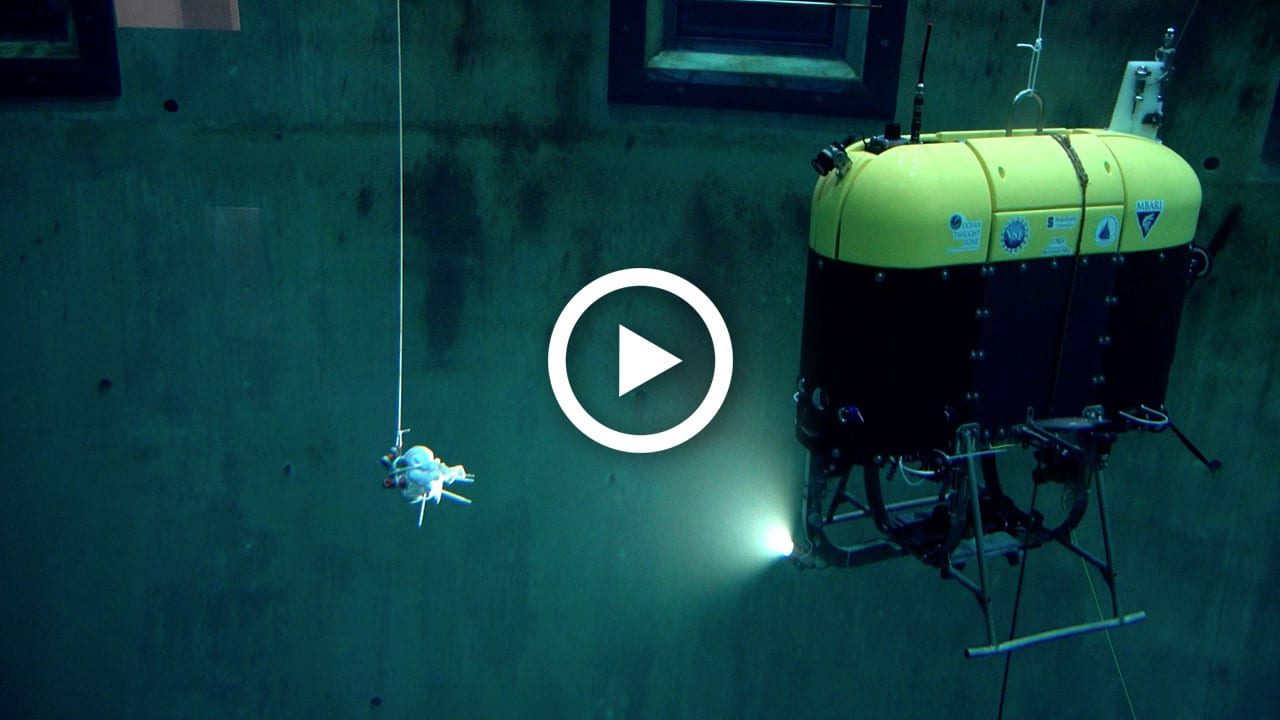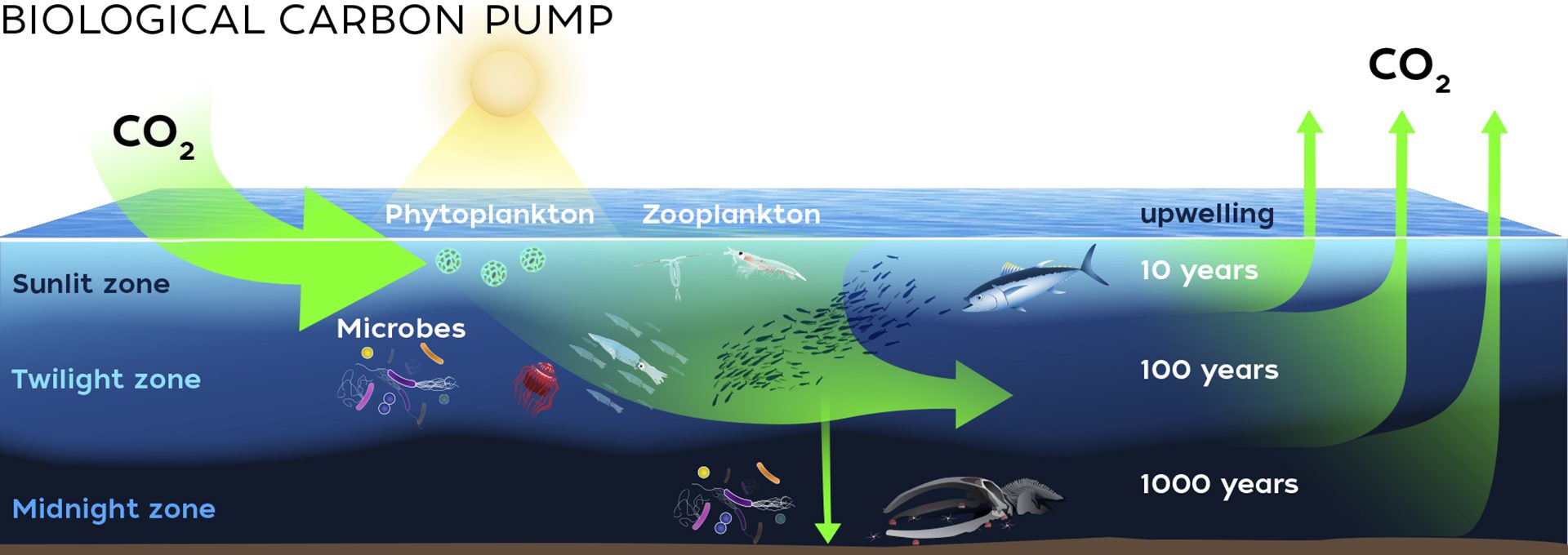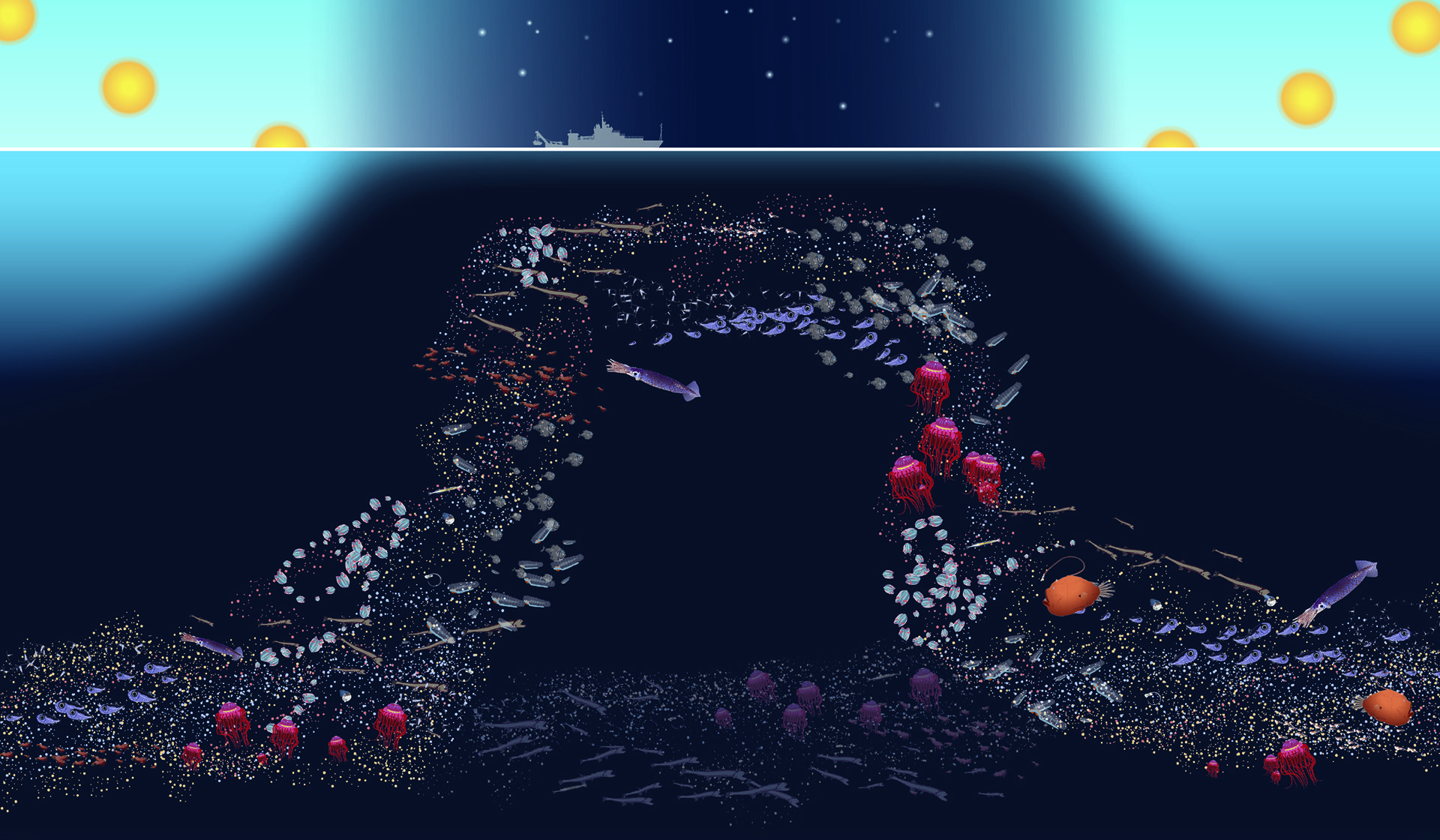Multimedia Items
Discovering the Ocean Twilight Zone with Joel Llopiz
Most life forms in the twilight zone are tiny—a few inches or less—but even the smallest twilight zone inhabitants are powerful through sheer number. Joel Llopiz, Associate Scientist at the Woods Hole Oceanographic Institution, is part of the Ocean Twilight Zone (OTZ) project. The project is embarking on a bold new journey to explore one of our planet’s hidden frontiers—the ocean twilight zone, a vast, globe-spanning, and dimly lit region between about 200 and 1,000 meters beneath the ocean’s surface. Understanding of the twilight zone is currently limited by its enormous size and lack of easy access.
Several members of the OTZ project team conducted an expedition aboard OceanX’s research vessel, the M/V Alucia, out of the Bahamas in spring of 2019. The main goal of the expedition was to examine how the OTZ project site off the coast of New England differs from this distant –yet connected– region of the twilight zone. Going to different areas is critical to help us understand how abundance and types of organisms change geographically. Even from onboard observations, it was clear that this area has far fewer organisms than off the more nutrient-rich waters of New England. The team worked closely with OceanX to share their journey through video diaries and photographs of the extraordinary creatures brought on board throughout the cruise.
The Ocean Twilight Zone is supported the Audacious Project, a collaborative endeavor, housed at TED, to surface and fund ideas with the potential to create change at thrilling scale.
Read MoreEntering the Ocean Twilight Zone with Heidi Sosik
It is hard to describe what it’s like to physically travel down to the twilight zone. In addition to extraordinary bioluminescence, Heidi Sosik, senior scientist at Woods Hole Oceanographic Institution and Ocean Twilight Zone (OTZ) project lead, was able to observe beautiful jellies and small fishes like bristlemouths, hatchet fish, and lanternfish, all in their natural habitat.
Several members of the OTZ Project team conducted an expedition aboard OceanX’s research vessel, the M/V Alucia, out of the Bahamas in spring of 2019. The main goal of the expedition was to examine how the OTZ project site off the coast of New England differs from this distant –yet connected– region of the twilight zone. Scientists conducted net tows to collect animals at specific depths within the twilight zone and went down in a manned submersible to observe life there. They also collected water samples for environmental DNA analysis, a kind of forensic tool that allows scientists to sleuth out organisms the scientists weren’t able to physically catch. The team worked closely with OceanX to share their journey through video diaries and photographs of the extraordinary creatures brought on board throughout the cruise.
The Ocean Twilight Zone is supported the Audacious Project, a collaborative endeavor, housed at TED, to surface and fund ideas with the potential to create change at thrilling scale.
Read MoreMeet an Ocean Twilight Zone photographer
Fish ecologist, Paul Caiger explains how he brings together his passion for the Ocean Twilight Zone and photography to shed light on one of the least known regions on the planet. This was part of a mission in spring of 2019 where several members of the OTZ Project team conducted an expedition aboard OceanX’s research vessel, the M/V Alucia, out of the Bahamas. The main goal of the expedition was to examine how the OTZ project site off the coast of New England differs from this distant –yet connected– region of the twilight zone. The team worked closely with OceanX to share their journey through video diaries and photographs of the extraordinary creatures brought on board throughout the cruise. The Ocean Twilight Zone is supported by the Audacious Project, a collaborative endeavor, housed at TED, to surface and fund ideas with the potential to create change at thrilling scale.
Read MoreResearching the Twilight Zone
Meet WHOI technician, Helena McMonagle, and learn how research is conducted in the twilight zone using MOCNESS. This was part of a mission in spring of 2019 where several members of the OTZ Project team conducted an expedition aboard OceanX’s research vessel, the M/V Alucia, out of the Bahamas. The main goal of the expedition was to examine how the OTZ project site off the coast of New England differs from this distant –yet connected– region of the twilight zone. The team worked closely with OceanX to share their journey through video diaries and photographs of the extraordinary creatures brought on board throughout the cruise. The Ocean Twilight Zone is supported by the Audacious Project, a collaborative endeavor, housed at TED, to surface and fund ideas with the potential to create change at thrilling scale.
Read MoreMesobot: Following life in the Twilight Zone
Mesobot is a brand new underwater vehicle designed to reveal what lives in the ocean’s twilight zone. Mesobot can follow animals as they move through the darkness and as they migrate from the depths to the surface and back. The twilight zone is vast and remote, but is threatened by unregulated fishing and climate change. We need Mesobot’s insights to understand and protect the twilight zone before humans change it forever.
Read MoreWHOI’s First Ocean Twilight Zone Expedition
The Ocean Twilight Zone abounds with life but has remained largely unexplored. A team of researchers led by WHOI acoustic oceanographer Andone Lavery recently returned from the first expedition to…
Read MoreOcean Twilight Zone Engineer Kaitlyn Tradd
Mechanical Engineer Kaitlyn Tradd describes how a day in a WHOI exhibit center changed her life, as she prepares to explore the Ocean Twilight Zone in an unprecedented expedition aboard…
Read MoreLife in the Twilight Zone
The ocean twilight zone—200 to 1,000 meters (660 to 3,300 feet) beneath the surface—teems with life. Spanning the entire world, its waters are vast, dimly lit, and under crushing pressures.…
Read MoreCatching ‘snow’ in the ‘twilight zone’
Clindor Cacho of WHOI (middle), and Brad Issler (left) and Stephen Bell (right) from the Bermuda Institute of Ocean Sciences, recover a Neutrally Buoyant Sediment Trap (NBST) after a mission…
Read MoreSun and snow in the “Twilight Zone”
Sunset on the RV Atlantic Explorer during a research cruise in September 2009 in the Sargasso Sea as part of the Twilight Zone Explorer research project led by Ken Buesseler. …
Read MoreWorking in the Twilight Zone
Particles sinking from sunlit surface waters through the ocean’s dimly lit twilight zone are often swept sideways by currents. Conventional moored or tethered traps designed to catch the particles for…
Read MoreA robot to explore the dark ocean!
We designed Mesobot, our new hybrid robot, specifically to study life in the ocean twilight zone. It can maneuver under its own power for more than 24 hours, using its cameras and lights to slowly follow individual animals while making a variety of other measurements and even taking samples.
Read MoreCrossata alba jellyfish
Delicate jellyfish such as this Crossota alba thrive in the Ocean Twilight Zone, where no wind, waves, or turbulence can tear them apart. In spite of their fragility, these gelatinous animals are often successful predators
Read MoreIlluminating the Abyss
Join four leading ocean explorers and advocates for a live conversation about pushing boundaries and seeking solutions to the Earth’s most pressing problems—deep in the ocean’s twilight zone.
Read MoreUnderwater robot tracks ocean creatures
An innovative underwater robot known as Mesobot is providing researchers with deeper insight into the vast mid-ocean region known as the “twilight zone.” Capable of tracking and recording high-resolution images of slow-moving and fragile zooplankton, gelatinous animals, and particles, Mesobot greatly expands scientists’ ability to observe creatures in their mesopelagic habitat with minimal disturbance. This advance in engineering will enable a greater understanding of the role these creatures play in transporting carbon dioxide from the atmosphere to the deep sea, as well as how commercial exploitation of twilight zone fisheries might affect the marine ecosystem.
Read MoreKeep It Weird
Discover the weird and wonderful creatures of the Ocean Twilight Zone and how they keep our planet healthy. Take our quiz to find your weird at keepitweird.org!
Read MoreHyperiid amphipod: a shimmer in the net
This hyperiid amphipod is a member of the crustacean family that typically act as parasites to gelatinous neighbors, such as salps. This particular suborder lives exclusively in the marine environment. Paul Caiger, who snapped the picture, saw this particular shrimp-like species during an ocean twilight zone research cruise on R/V Neil Armstrong (2020).
Read More360˚ Video: Deploying Mesobot
You’re on deck as the stealthy underwater robot Mesobot makes another trip into the ocean twilight zone to test equipment that will help scientists track bits of “environmental DNA” floating in the water.
Read MoreOpen Ocean Diving Observations
Watch and learn how blue and black water diving is conducted in the open ocean and what these divers see during the day and during the twilight zone migration at night.
Read MoreWhat’s it like in a submersible?
It is hard to describe what it’s like to physically travel down to the twilight zone. Both Heidi Sosik, senior scientist at Woods Hole Oceanographic Institution and Ocean Twilight Zone (OTZ) project lead and Joel Llopiz, Associate Scientist, and OTZ lead of the life histories and behavior theme went down in a submersible for the first time to experience the twilight zone. They were able to able to observe beautiful jellies and small fishes like bristlemouths, hatchetfish, and lanternfish, all in their natural habitat.
This was part of a mission in spring of 2019 where several members of the OTZ Project team conducted an expedition aboard OceanX’s research vessel, the M/V Alucia, out of the Bahamas. The main goal of the expedition was to examine how the OTZ project site off the coast of New England differs from this distant –yet connected– region of the twilight zone. The team worked closely with OceanX to share their journey through video diaries and photographs of the extraordinary creatures brought on board throughout the cruise. The Ocean Twilight Zone is supported the Audacious Project, a collaborative endeavor, housed at TED, to surface and fund ideas with the potential to create change at thrilling scale.
Read MoreWhat is the story behind Mesobot?
Mesobot is designed to let scientists observe the twilight zone by autonomously tracking individual animals for hours or even days without disturbing the environment or disrupting their behavior, making it possible to follow individual animals as they take part in the great migration from the twilight zone to the surface and back each day. Mesobot is also equipped with samplers that will allow it to capture traces of environmental DNA (eDNA) from seawater while on a dive. The engineering team held their first successful at-sea test in June of 2019.
Read MoreBiological Carbon Pump
Biological Carbon Pump Once the solubility pump introduces carbon into surface waters, the ocean twilight zone’s biological carbon pump (BCP) plays an important role in the rapid removal of a…
Read MoreOTZ Mixing Pump and Migration Pump
MIGRANT PUMP: The diel vertical migration (DVM) is a major part of the ocean’s BCP. As the sun sets each day, many animals living in the twilight zone—including fishes, gelatinous…
Read MoreOcean food web processes that drive carbon cycle
The figure above illustrates the ocean food web processes that drive the transformation and partitioning of carbon among various reservoirs. Dissolved inorganic carbon enters the ocean as CO2 which is…
Read More
